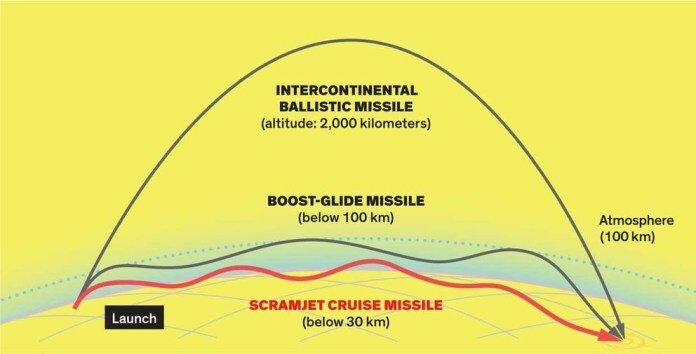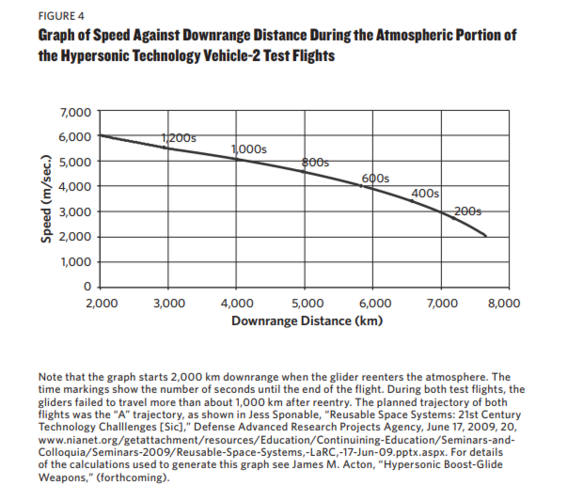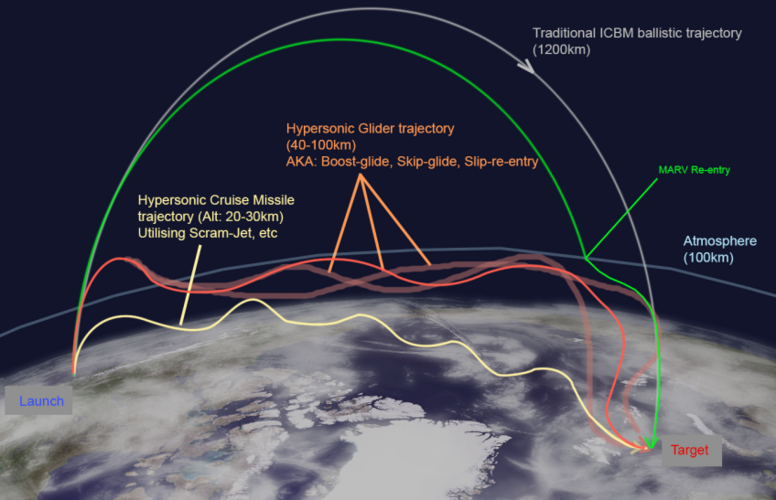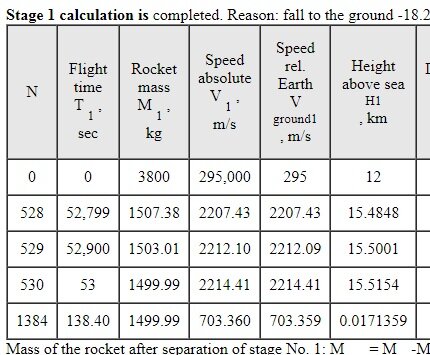Using the Sputnik program, calculate the speed and flight range of a hypothetical rocket depending on the launch conditions.
Initial data:
Starting mass 3800 kg, fuel mass 2300 kg, mass after fuel production 1500 kg
The thrust of the engine at the ground is 100 kN, in vacuum 120 kN
The specific impulse at the earth is 2551 m/s, in vacuum 2700 m/ s
The diameter of the rocket is 0.72 m
Start conditions: height 0 m, speed 0 m/s, pitch 54 degrees
Active section 0 – 55.2 sec, speed at the end of the active section 1783 m/s, 6419 km/h, M=6
Flight time 350 seconds / 5.83 minutes, speed at the time of arrival 1247 m / s, 4493 km / h, M=3.67
Trajectory length 462 km, flight range 383 km, maximum flight altitude 113 km at 192 seconds
MiG-31I
Start conditions: altitude 15,000 m, speed 650 m/s, 2340 km/h, M =2.2, pitch 44 degrees
Active section 0 – 52 sec, speed at the end of the active section 2785 m/s, 10026 km/h, M=9.44
Flight time 483 seconds / 8.05 minutes, speed at the time of arrival 1815 m / s, 6534 km / h, M = 5.34
Trajectory length 1121 km, flight range 980 km, maximum flight altitude 229 km at 249 seconds
The range of the carrier without external tanks is 1178 km, the complex is 1178 km + 980 km = 2158 km (no more)
The range of the carrier with external tanks is 1568 km, the complex is 1568 km + 980 km = 2548 km (no more)
Su-34M
Start conditions: altitude 10000 m, speed 265.5 m/s, 956 km/h, M=0.9, pitch 48 degrees
Active section 0 – 52 sec, speed at the end of the active section 2332 m/s, 8395 km/h, M=7.9
Flight time 423 seconds / 7.05 minutes, speed at the time of arrival 1579 m/s, 5684 km/h, M=4.64
The trajectory length is 793 km, the flight range is 683 km, the maximum flight altitude is 175 km at 222 seconds
The range of the carrier without external tanks is 1178 km, the complex is 1354 km + 683 km = 2037 km (no more)
The range of the carrier with external tanks is 1615 km, the complex is 1615 km + 683 km = 2298 km (no more)









